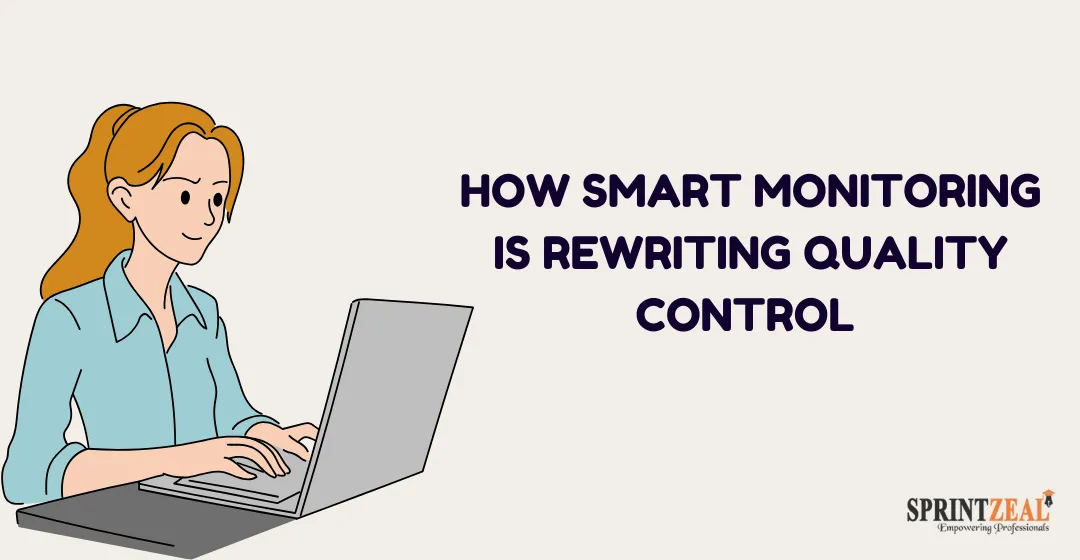Pareto Chart in Six Sigma - Explained
-
 By Ganesh Babu
By Ganesh Babu - Published on Mar 24 2025

What is a Pareto Chart in Six Sigma?
Six Sigma is an array of tools and approaches to process management. With businesses around the world, Six Sigma has become a global trend.
Companies and individuals use six sigma methodologies to boost the overall operating efficiencies. It helps restore business processes and emphasizes full productivity in all service characteristics, and focuses more on reducing process errors.
The Six Sigma methodology involves the usage of a Pareto Chart to find out the solutions to errors and also effectively reduce them.
A Pareto chart is a way of finding out the most common factors that lead to an error situation. To conduct a graphical analysis of the data, the Pareto Chart can help to define the significant drivers for the method being employed and thus prioritize the behavior in line with it.
Pareto charts are used as a valuable tool in project management, notably in Six Sigma.
Table of Contents
Pareto Chart in Six Sigma Explained in Detail
Pareto chart definition - Pareto chart in six sigma is used to show the frequency the phenomena occur at. It is a bar graph where each frequency or frequency range is displayed on the basis of the Pareto Principle, also referred to as the 80-20 rule or the vital few rule, in descending order of data importance from left to right. The Pareto graph shows vertical bars in a downward order, and a line graph showing cumulative total categories. In Microsoft Excel, these charts can be easily created.

Many of the process defects follow a certain pattern, with relatively few problems causing the bulk of defects. In order of faults, the Pareto Analysis offers the relative frequency of problems, thus providing a list of absolute priority problems. The most outstanding results can be achieved by tackling and improving problems based on those priorities.
In most cases, Pareto charts are a valuable tool in Total Quality Management (TQM), Pareto Six Sigma, and other process improvement methodologies. They help teams focus on the "vital few" causes that account for most of the problems, leading to more efficient use of resources and faster problem resolution.
Get Six Sigma Training from Industry Expert Trainer - Online, Live Online, and Classroom Training
When to Use a Pareto Chart:
It is advisable to create a Pareto chart in the following instances:
- Analyzing the defect frequency in a process
- Determination of the process causes
- Figuring out the most significant problems of a process
- Communication of data with others effectively.
Pareto Analysis Principle With Example
Profits – By using the Pareto chart histogram, many leading companies found that 20% of their products drive around 80% of their profits. Therefore it is advisable that the company must focus on 20% of the remaining customers as It will provide them the most fantastic opportunity to drive profits.
Errors – It is frequently observed in a company that one part of their method is responsible for 80% of its errors. Hence, the company can typically produce outsized results when fixing one operation.
Six Sigma teams use the Pareto Principle to focus on addressing a limited number of root causes that result in the majority of problems. A Pareto chart, a bar graph, helps visually represent this by showing the frequency of problems in descending order. By analyzing this chart, teams can prioritize their efforts on the most significant issues, which will likely result in substantial improvements.
Purpose of pareto chart
- Pareto charts are used to typically view the process problems at a glance
- They help quickly identify the most significant issues that contribute to most problems, based on the 80/20 rule (Pareto Principle).
- Pareto charts are used to concentrate fiercely on the problems that cause the most considerable disruption
Presenting a Pareto Chart in graphical form displays the specific types of problems that afflict the process and illustrates the relative significance of these problems.
Using the Pareto Chart in six sigma as a guide, project teams can decide which problems to address first. Six Sigma teaches project teams to address problems that impact customers and profitability first. The Pareto Principle teaches that most of the problems in the process have just a few causes. The Six Sigma technique of creating a Pareto diagram supports this principle one step further and illustrates what these causes are and how much potential impact they have on the process.
One of the most common reasons charts are produced is the ability to promptly communicate a lot of data with an enormous group of people. The creation of a Pareto diagram will help to depict the exact problems or the causes of such problems that need to be addressed using various visual means.
The intended audience can view the Pareto chart and observe the most familiar issues, or the most common problems cause instantly.
Pareto analysis is used for improving communication. This method makes it easier to communicate the different projects, which the company is supposed to undertake for success in improving the quality.
Steps to Create a Pareto Chart for Six Sigma
Constructing a Pareto Chart within the Six Sigma methodology is a systematic process designed to identify and prioritize the key factors contributing to process errors. By implementing these steps, businesses can leverage the power of Pareto analysis to streamline efforts and enhance overall efficiency.

Constructing a Pareto Chart within the Six Sigma methodology is a systematic process designed to identify and prioritize the key factors contributing to process errors. Using these steps, businesses can use the Pareto analysis to reduce efforts and increase efficiency for the higher-value work.
Identify and Define the Problem:
Initiate the Pareto Chart creation process by clearly defining the problem at hand. Whether it's manufacturing defects, service errors, or process inefficiencies, a well-defined problem statement sets the foundation for targeted analysis.
Gather Relevant Data:
Collect accurate and comprehensive data related to the identified problem. The next step is to validate that the data collected is an accurate reflection of the problems identified and needed for the Pareto analysis to be worthwhile.
Categorize Data:
Classify the collected data into some groups or factors. That categorization sets the stage for the following analysis, enabling closer inspection of what are presumed to be the root causes of the described problem. Categorization breaks the overall problem into manageable pieces for analysis.
Calculate Frequency:
Determine the frequency or occurrence of each category within the dataset. This step quantifies the number of occurrences of every factor and in turn, tells us about how errors are distributed among the categories.
Calculate Cumulative Frequency:
Establish the cumulative frequency for each category. Cumulative frequency aids in understanding the overall impact of each factor, helping identify the significant contributors to the observed problem.
Construct the Chart:
Use the categorized data and frequency values to build the Pareto chart. The chart typically shows:
X-axis: Categories or types of defects/issues, arranged in descending order (from the most frequent to the least frequent).
Y-axis: Frequency of occurrences.
Cumulative Line: Line graph overlaid with the cumulative percentage of total problems/defects as bars.
You can create this chart and visualize the data by easily using tools such as Excel.
Analyze and Prioritize:
Analyze the constructed Pareto Chart to identify the vital few factors contributing to the majority of errors. The Pareto rule, often known as the 80/20 rule, may come into play here, highlighting that approximately 80% of errors stem from 20% of causes. Prioritize these factors for targeted improvement efforts.
In implementing these steps, businesses leverage the principles of Pareto analysis, constructing a meaningful Pareto chart that facilitates informed decision-making within the Six Sigma framework. This process enables teams to prioritize their work on driving the highest impact factors for optimal investment, sustainable process improvements, and resource prioritization.
Purpose of Pareto Chart in Six Sigma
Since the Pareto analysis is an efficient method for the identification of critical inputs, the focus on these shall generate the most feasible results. In addition to the basic Pareto chart, there are many other variations that Six Sigma professionals can use. These include -
- Major breakdown cause: By using a second Pareto diagram the tallest bar can be broken down into sub-causes. This helps in analyzing the root causes in more detail and identifying specific areas for improvement within a major problem.
- Before and After: After a change has been implemented, a second Pareto chart must be created to demonstrate a side-by-side comparison with the original chart. This side-by-side comparison helps visualize the effectiveness of the actions taken and quantify improvements over time.
- Subtly changing the Data Source: Takes into account analyzing a similar problem from diverse perspectives. For example, from multiple departments to locations, types of equipment, and so on. This variation helps in uncovering trends that might be specific to certain contexts.
- Change the Measurement Scale: Typically using the same inputs, however, measuring the outputs differently. For example, one chart can measure the cost while others can measure the frequency. This allows teams to see different impacts and make more informed decisions based on their goals.
Using a Pareto chart to analyze problems in the business project allows focusing efforts on the ones offering the most considerable improvement potential. Whether breaking down large issues, comparing results before and after changes, or viewing the problem from different angles, the Pareto chart is an essential tool for achieving efficiency in process improvement.
Real-World Examples of Six Sigma Pareto Charts
To provide practical insights into the application of Pareto Charts within the Six Sigma methodology, let's explore real-world examples showcasing how businesses leverage this powerful tool for process improvement.
Manufacturing Defects:
In a manufacturing setting, a company utilizing Six Sigma may encounter challenges related to product defects. By employing a Pareto Chart, the team can identify specific types of defects that contribute most significantly to production errors. For instance, categories such as material flaws, assembly issues, or quality control lapses might emerge as key contributors. This insight enables focused efforts to address and rectify these critical defects, ultimately enhancing overall product quality.
Service Process Errors:
Consider a service-oriented business implementing Six Sigma methodologies. In such a context, service process errors may hinder customer satisfaction. Through the application of Pareto Charts, the organization can pinpoint the most common service-related issues. This might include categories like communication breakdowns, delayed response times, or procedural errors. Armed with this prioritized information, the business can strategically address and eliminate the root causes of these prevalent errors, leading to improved service quality and heightened customer satisfaction.
In both manufacturing and service-oriented scenarios, Pareto Charts serve as invaluable tools for visually presenting and prioritizing factors contributing to errors. By focusing efforts on the vital few categories identified through the Pareto analysis, businesses can achieve targeted improvements and streamline their processes effectively.
Conclusion
A Pareto Chart consists of a line graph and a vertical bar. The bars represent the problem's independent values in descending order from left to right; the line indicates the cumulative sum.
The Pareto Chart and Pareto Analysis help project managers discover the minor causes which significantly affect the project.
The Pareto chart helps to set priorities for tasks and activities, without a doubt. Represent a variant of a bar chart, it is simple to draw, use, and properly communicate problems to stakeholders.
Pareto diagrams can be used to identify problems to work on. They can support you to produce greater efficiency, conserve materials, reduce costs, or increase safety. They are most meaningful, however, if your customer, the person or organization that receives your work, helps precisely define the problem categories.
To learn about six sigma concepts in detail and gain new skills, you can take up the six sigma training. Sprintzeal offers all levels of six sigma training. To get details, chat with our course expert
Sprintzeal also offers training for many other popular Quality Management courses like,
FAQs about Pareto Charts in Six Sigma
Q1: What is the Pareto rule in Six Sigma?
The Pareto rule, also known as the 80/20 rule, posits that roughly 80% of effects come from 20% of causes. In Six Sigma, this rule is applied through Pareto Charts to identify and prioritize the most critical factors contributing to errors.
Q2: What are Pareto Charts used for?
Pareto Charts in Six Sigma are used to identify the most significant contributors to a problem. They prioritize factors based on frequency, enabling businesses to focus resources on addressing the vital few issues that lead to the majority of errors.
Q3: What is the Pareto Chart mainly used for?
The Pareto Chart is primarily used for visualizing and prioritizing the causes of a problem. It helps teams in Six Sigma to concentrate their efforts on the key factors that will have the most substantial impact on improving processes.
Q4: What is Pareto Chart in 7 QC tools?
In the realm of the 7 Quality Control (QC) tools, the Pareto Chart is a powerful instrument for problem-solving. It aids in classifying and prioritizing issues, allowing teams to efficiently allocate resources for optimal results.
Q5: How does the Pareto Principle help improve business processes?
The Pareto Principle helps businesses focus on the most impactful factors contributing to errors or inefficiencies. By concentrating on the 20% of causes that result in 80% of the problems, teams can make targeted improvements that generate the greatest overall impact on productivity and quality.
Q6: Can Pareto Charts be used in areas other than Six Sigma?
Yes, Pareto Charts are versatile tools that can be applied in various industries beyond Six Sigma, such as project management, quality control, and customer service. They help prioritize tasks and identify the most critical issues in any process, making them valuable across multiple disciplines.
By addressing these frequently asked questions, we deepen our understanding of the role and significance of Pareto Charts within the Six Sigma framework, solidifying their position as essential tools for data-driven decision-making and continuous improvement.
Subscribe to our Newsletters
Popular Programs
Trending Posts
Quality Control Explained – Six Sigma
Last updated on Feb 21 2024
Six Sigma Certification Guide - A Professional's Guide
Last updated on Sep 27 2024
Top Qualities of a Good Manager and a Leader
Last updated on Aug 11 2022
Live Data, Faster Fixes: How Smart Monitoring Is Rewriting Quality Control
Last updated on Aug 27 2025
Operational Planning Creation, Key Elements and its Benefits
Last updated on Feb 21 2025
How to Become a Quality Manager - Career, Job Scope and Certifications
Last updated on Dec 18 2023
Categories
- Other 66
- Agile Management 56
- Cloud Computing 51
- Project Management 170
- Big Data 58
- Business Management 82
- Digital Marketing 73
- IT Service Management 29
- Programming Language 50
- AI and Machine Learning 68
- IT Security 109
- Quality Management 77
- IT Hardware and Networking 25
- Microsoft Program 4
- Workplace Skill Building 12
- Risk Management 9
- Information Security 8
- Leadership and Management 7
- Corporate Training and Development 1
Trending Now
Top Career benefits of Lean Six Sigma Green Belt
ArticleLean methodology, Six Sigma methodology and Lean Six Sigma Explained
ArticleSix Sigma Black Belt Certification – Value and Career Benefits in 2024
ArticleSix Sigma Certification Guide - A Professional's Guide
ArticleQuality Control Explained – Six Sigma
ArticleQuality Assurance in Six Sigma Explained
ArticleQuality Assurance vs Quality Control
ArticleTotal Quality Management - A Complete Guide for Beginners
ArticleSix Sigma Certification – Everything you Need to Know About Getting Certified
ArticleLean Six Sigma on Resume for Rewarding Career Benefits
ArticleSix Sigma Yellow Belt Certification - Six Sigma for Beginners
ArticleQuality Management Interview Questions 2024
ArticleQuality Manager Interview Questions and Answers for 2025
ebookService Delivery Manager Interview Questions and Answers (With Examples)
ArticleSix Sigma Interview Questions and Answers 2024
ArticleA Supply Chain Management Guide to Mastering Logistics End to End
ArticleSenior Quality Manager Interview Questions and Answers 2024
ArticleTop Quality Analyst Interview Questions and Answers 2025
ArticleFinancial Analyst Interview Questions and Answers 2024
ArticleRisk Manager Interview Questions and Answers 2024
ArticleCompliance Manager Interview Questions and Answers 2025
ArticleOperation Manager Interview Questions and Answers
ArticleHow to Become a Quality Manager - Career, Job Scope and Certifications
ArticleHow to become a Quality Analyst
ArticleSix Sigma Certifications - Reasons Why you Should Get Them
ArticleTop Qualities of a Good Manager and a Leader
ArticleLearn about Statistical Process Control (SPC) and its top applications
ArticleCost of Poor Quality - A Detailed Guide
ArticleImplementing 5S Methodology for Better Work Efficiency
ArticleWhat Is Lean Management?
ArticleBest Six Sigma Books in 2024
ArticleLeadership vs Management - The Ultimate Guide
ArticleQuality Assurance Plan - Six Steps To Quality Assurance Plan
ArticleOperational Planning Creation, Key Elements and its Benefits
ArticleA Complete Guide to Product Life Cycle Stages 2025
ArticleSix Sigma tools for DMAIC Phases
ArticleWhat Is Lean Manufacturing?- An Overview
ArticleThe Lean Continuous Improvement Model: A Comprehensive Guide
ArticleDMAIC vs. DMADV: Key Differences and Choosing the Right Six Sigma Methodology
ArticleA Deep Dive into the Power of Lean Continuous Improvement Process
ArticleIntroduction to Lean Manufacturing- Definitions, Framework, and More
ArticleLean Continuous Improvement Methods for Business Excellence
ArticleUnderstanding the Key Principles of Lean Manufacturing
ArticleSecret to Unlock Organizational Excellence: Stages of Continuous Improvement
ArticleLean Continuous Improvement: A Detailed Guide to Mastering Organizational Quality
ArticleLean Waste Management: The Ultimate Guide 2023
ArticleA Deep Dive into Lean Continuous Improvement Tools
Article8 Wastes of Lean - Strategies for Identification and Elimination
Article5 Lean Continuous Improvement Principles to Supercharge Your Operations
ArticleThe Ultimate Guide to Lean Manufacturing
ArticleUnderstanding Lean Manufacturing's Pros and Cons
ArticleLean Waste Reduction Strategies: Boost Efficiency and Cut Costs
ArticleTop 10 Lean Manufacturing Tools for Optimal Productivity
ArticleBeyond the Basics: Benefits of Lean Continuous Improvement
ArticleWhat are Quality Standards? | A Guide to ISO Standards
Article7 Important Types of Quality Management System
ArticleISO 9001 Standard: Benefits and Certification
ArticleA Comprehensive Guide to Quality Management Systems
ArticleBenefits of QMS Certification for Your Business
ArticleStep-by-Step Implementation Guide to ISO 9001
ArticleThe Ultimate Guide to ISO 9001: Boosting Quality and Certification Success
ArticleEssential Components of a Quality Management System
ArticleQuality Management System – QSM Approaches and Methodologies
ArticleHow to Effectively Implement a Robust Quality Management System?
ArticleExplaining QMS Documentation Structure: Benefits and Best Practices
ArticleWho Needs ISO 9001 Certification and Why?
ArticleKey Elements of ISO 9001:2015 Quality Management System
ArticleOvercoming Common Challenges in ISO 9001 Certification: Tips and Best Practices
ArticleBest Quality Management Tools
ArticleTotal Quality Management (TQM) vs. Six Sigma
ArticleQuality Manager Salary: What Freshers & Experts Earn in 2025
ArticleCertified Scrum Product Owner: Job Roles And Responsibilities
ArticleTips for Continuous Integration Testing: Streamlining QA
Article10 Quality Management Strategies Adopted by Top Managers
ArticleDMAIC for Warehouse Safety: From Hazards to Control
ArticleLive Data, Faster Fixes: How Smart Monitoring Is Rewriting Quality Control
Article


















